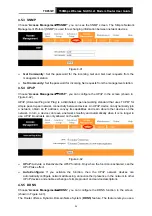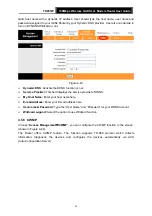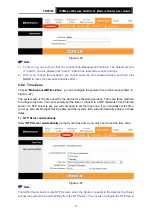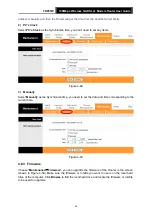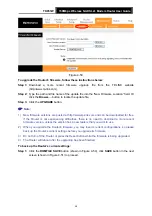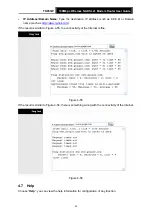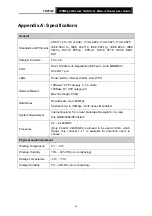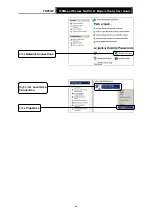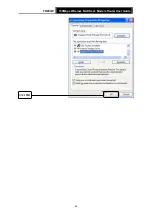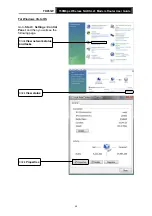
TD851W
150Mbps Wireless N ADSL2+ Modem Router User Guide
54
4.5.3 SNMP
Choose “
Access Management
→
SNMP
”, you can see the SNMP screen. The Simple Network
Management Protocol (SNMP) is used for exchanging information between network devices.
Figure 4-41
¾
Get Community:
Set the password for the incoming Get and Get next requests from the
management station.
¾
Set Community:
Set the password for incoming Set requests from the management station.
4.5.4 UPnP
Choose “
Access Management
→
UPnP
”, you can configure the UPnP in the screen (shown in
UPnP (Universal Plug and Play) is a distributed, open networking standard that uses TCP/IP for
simple peer-to-peer network connectivity between devices. An UPnP device can dynamically join
a network, obtain an IP address, convey its capabilities and learn about other devices on the
network. In turn, a device can leave a network smoothly and automatically when it is no longer in
use. UPnP broadcasts are only allowed on the LAN.
Figure 4-42
¾
UPnP:
Activate or Deactivate the UPnP function. Only when the function is activated, can the
UPnP take effect.
¾
Auto-Configure:
If you activate the function, then the UPnP network devices can
automatically configure network addressing, announce their presence in the network to other
UPnP devices and enable exchange of simple product and service descriptions.
4.5.5 DDNS
Choose “
Access Management
→
DDNS
”, you can configure the DDNS function in the screen
(shown in Figure 4-43).
The Router offers a Dynamic Domain Name System (
DDNS
) feature. The feature lets you use a















